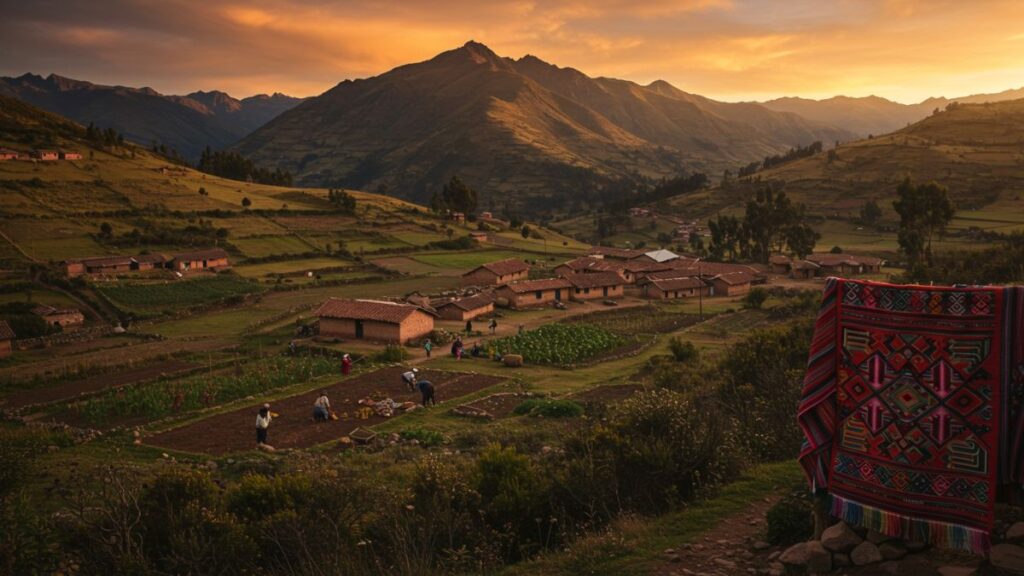In a world increasingly defined by digital noise and fleeting trends, there is a growing yearning for connection to something deeper, more enduring, and fundamentally human. The term Uncuymaza arrives not as a defined concept, but as a resonant vessel—a word that feels ancient, earthy, and rich with unspoken meaning. Its phonetic texture suggests a origin tied to the natural world, perhaps from the deep roots of an Indigenous or pre-modern language. It evokes images of weathered stone, whispering winds through ancient valleys, and the silent, sturdy wisdom of the land itself. This article does not seek to confine Uncuymaza to a single definition, but rather to explore the profound themes and concepts it instinctively embodies, inviting us to consider the forgotten harmonies between humanity and the natural world.
1. The Linguistic Archaeology: Unearthing Phonetic Roots and Cultural Resonance
The power of Uncuymaza begins with its sound. The prefix “Uncu-” (pronounced OON-koo) carries a weighty, grounded sensation, common in Quechua and other Andean languages, often relating to concepts of the earth, the sacred, or the foundational. The “-maza” suffix resonates with words meaning “window,” “eye,” or “to be born” in various linguistic traditions, suggesting an opening, a perception, or a genesis. Together, the term feels like a holistic concept: perhaps “the eye of the earth,” “the window of the ancestors,” or “the sacred birth of the land.” This linguistic archaeology isn’t about finding a direct translation, but about feeling the cultural resonance. It suggests a worldview where language is not separate from nature but is born from it, where words themselves are living entities that carry the memory of mountains, rivers, and the collective wisdom of those who came before. Uncuymaza, therefore, stands as an antidote to the disposability of modern language, offering a glimpse into a more integrated and respectful way of seeing and naming our world.
2. The Philosophical Pillar: Interconnectedness and Ancestral Knowledge
If we accept Uncuymaza as a philosophical principle, its core tenet would be radical interconnectedness. It represents the understanding that all life—human, plant, animal, rock, and river—is part of a single, breathing, conscious system. This is not a mere metaphor but a lived reality, a framework for existence where every action has a ripple effect through the entire web. In this view, ancestors are not gone; they are present in the soil we walk on, the air we breathe, and the genetic and cultural memory we carry. Uncuymaza is the practice of listening to this ancestral hum, of seeking counsel not only from living elders but from the lessons encoded in the land itself. It challenges the hyper-individualism of contemporary society, proposing instead a model of community that transcends time and species, urging a responsibility not just to ourselves and our immediate peers, but to the seventh generation that will follow and to the health of the planet that sustains us all.
3. The Modern Application: Ecological Stewardship and Biophilic Design
The potency of a concept like Uncuymaza is measured by its ability to inform our modern lives. It moves beyond abstract philosophy into a imperative for action, particularly in the realms of ecological stewardship and environmental design. As a guiding principle for sustainability, Uncuymaza would demand a shift from resource extraction to reciprocal relationship. It would advocate for regenerative agriculture that heals the soil, for circular economies that produce zero waste, and for legal systems that grant rights to nature, recognizing ecosystems as living entities with intrinsic value beyond human use. In architecture and urban planning, Uncuymaza would be the soul of biophilic design—the effort to seamlessly integrate the built environment with the natural world. This means cities designed not as concrete jungles that conquer nature, but as organic extensions of it, with green corridors, living walls, natural light, and materials that honor their origin and can return to the earth without harm.
4. The Personal Practice: Cultivating Inner stillness and Deep Listening
Ultimately, the journey of Uncuymaza is also an internal one. It is a call to cultivate a personal practice that quiets the modern mind and reawakens a deeper, more intuitive way of knowing. This is the practice of deep listening—sitting in stillness in a natural space not to extract or to use, but simply to be present and to receive. It is the practice of learning to identify the plants and animals in your local ecosystem, understanding their patterns and their roles. It is the act of contemplating your own place within the vast chain of being, considering the ancestors whose decisions led to your existence and the descendants whose world you are currently shaping. Uncuymaza, in this deeply personal sense, is the quiet voice that reminds us of our true size: neither the masters of the universe nor insignificant specks, but integral and responsible participants in a magnificent, ancient, and ongoing story of life.
Conclusion: Uncuymaza as a Compass for a New Paradigm
Uncuymaza remains undefined by design. It is not a term to be locked in a dictionary but a living idea to be felt and enacted. It serves as a compass pointing toward a paradigm that values wisdom over information, relationship over transaction, and longevity over immediacy. In a time of profound ecological and social crisis, it offers a foundational concept from which to rebuild our systems and reorient our lives. It asks us the most critical questions: How do we listen to the earth? How do we honor our ancestors? How do we act as good ancestors ourselves? To engage with Uncuymaza is to begin answering these questions, not with words, but with a renewed way of being in the world—one of respect, reciprocity, and profound, purposeful connection.
